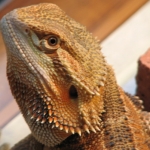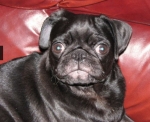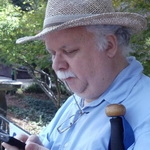EDITED TO CLARIFY: The content in this post is intended to refer to the Diagnosis & Treatment of Central/Complex/Mixed Sleep Apnea issues and not clear-cut cases of standard OSA which are relatively more straight forward to diagnose & treat. (The title of the thread has been amended to make this clearer).
From: viewtopic.php?f=1&t=80934&start=15&sid= ... 93#p737618
Yes you're right, there's defnitely lots of room for improvement in the diagnosis of Sleep Apnea related disorders (as there is with most other medical conditions).Pugsy wrote:Treating of either is really fairly clear cut once the proper diagnosis is made.
The problem is trying to make the diagnosis from what we see on a home machine within the limitations that it has...
but the main thing is getting the proper diagnosis to start with.
A) Sleep Studies. I'm still trying to figure out if sleep studies are completely accurate or can be wrong at times. The general consensus is that Home Studies are of limited value as they don't track sleep staging. However, the patient is in their normal sleep environment which IMO should make the test a bit more relevant. A lab test provides more data but i'm wondering if the relevancy of the data may be a bit 'distorted' as the patient is in an unfamiliar environment (and most likely uncomfortable vs being at home in your own bed) with someone literally watching you as you sleep (this must be unsettling for a lot of people). Even if this equivalent of the 'white coat syndrome' is not significant in affecting the results, i wonder if a series of the same tests done once per week over a month (or over a few consecutive days) would yield the same results. Since PSGs are costly, most people can only have one test or two at most (if that), and if the 'environment effect' does play a role, then the primary way of diagnosing may be less than optimal.
B) xPAPs. Home machines are another source of data which the more technically savvy xPAP users rely on to refine the diagnosis of their condition. Although it's useful in observing trends and responses to different settings, many experienced users in here have noted the limitations of these devices as a diagnostic tool. In fact, the usefulness of the data produced is questionable as each brand uses different algorithms and standards in detecting events and interpreting them. Imprecise science to say the least, but it's better than nothing i guess.
C) Knowledgeable Experts. Sleep medicine is a relatively new niche where patients may/often get different advice from different specialists who are limited to their specific experience on the topic and biased by their primary area of focus (ie ENT surgery, pulmonology etc). This certainly makes getting an accurate diagnosis a challenge. There's a thread (in fact there's probably quite a few) in here where one member mentioned how he/she travelled all across the US to see various Sleep medicine experts which produced inconclusive/unsatisfactory results. And that's in a country which is supposed to have the best medical practitioners. Safe to say, the diagnoses in other countries will likely be scatty as well. Regardless of where you are, it probably boils down to seeing the right doctor who has the 'right' knowledge, experience, attitude, has sleep apnea themselves and is a xPAP user too.
D) Interpreting Data. Anyone who uses software to analyze their xPAP data for a period of a few weeks or more will know that it's fairly time consuming if you're interested in ferreting into all the details to get as clear a picture as possible. If a doctor were to get an accurate idea of their sleep apnea patient's xPAP data, it would take at least 30 mins to 1 hour, assuming that they have the relevant software and are experienced in interpreting the data. However, since most of them do not even have the software/experience and tend to focus on keeping each consultation to between 20-30 mins, it's a mystery how they can possibly have the best chance of identifying the patient's unique sleep health issues.
So, how can the current options for Sleep Apnea diagnosis be improved? (Here are a couple of ideas to get things going. There must be lots of other possibilities so please share your thoughts below.)
1) xPAP Data Analysis Software/Service … Even though the data from home machines may have their inaccuracies, there's no doubt that they're useful to observe trends and to give a broader picture of how a patient is responding to therapy. Communities such as this one serve as a valuable source to help patients who would like to learn more about their CPAP data, but it's probably fair to say that we're in the minority here, as most patients do not (i) have a data capable machine (ii) are not technically savvy enough to get the data into a software on a computer and (iii) may not understand the concepts sufficiently or have the analytical abilities to interpret the data effectively.
To solve this (apart from machines with no data capabilities), it'd be great if there was a data analysis service where patients could upload/send their data and have it do the analysis which many of the more tech savvy patients try to do themselves when asking for advice in online forums. This could be done as extra features in the existing softwares but a service would be more useful to more people who don't have the ability or inclination to mess around on a computer. This could then free up patients to note/record more data about their sleep (ie was their nose very blocked on a particular night and other non-sleep related events) so that a more accurate diagnosis can be reached.
2) Home Sleep (Apnea) Monitoring System … Although home machines will never be as accurate as a lab test, it'd be great if they could come up with a home system that integrated the existing PAP machines with a (i) sophisticated oximeter* (ii) device like the ZEO to give data on sleep staging (even if it's not 100% accurate) (iii) accelerometer or something similar to detect supine/non-supine sleep positioning and (iv) anything else that might be useful in giving us a clearer picture and is feasible to incorporate.
* "one of the new pulse oximeters with not just heart rate and SpO2 percentage measured but “perfusion” (amount of blood in the finger) measured as well … Perfusion would tell, rather indirectly, if the event aroused you" … from Todzo's comment in viewtopic.php?f=1&t=79766&start=45
If we could get as much of the effectiveness of a lab test PSG into a patient's normal sleeping environment and allow for constant monitoring each night rather than only in a one-off test in a lab, we'd certainly be a lot closer to getting accurate data. This data could then be uploaded to a professional data analysis service in order to produce higher quality information to assist doctors in providing accurate diagnoses.











